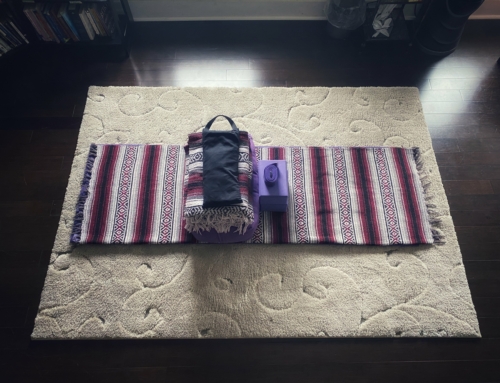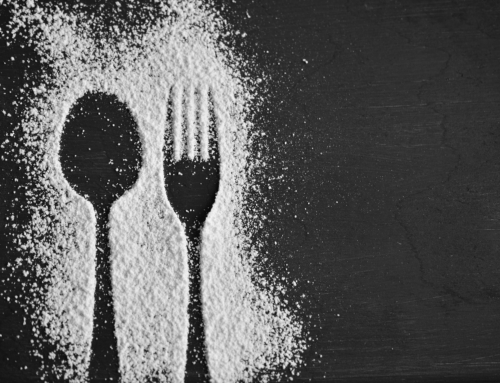Nightshade vegetables and pain
About ten years ago, I dove into a hot and intense power yoga practice. I was also working hard at the gym, trying to reach my goal of losing eighty pounds. All of this relatively “new” movement seemed to constantly take a toll on my body. I had no idea about nightshade vegetables and pain—but I would soon find out.
For about a year straight, I was sore
Yup, every day, morning, noon, and night, for one year, it hurt to move.
Why did I continue to push through workouts and power yoga classes?
I was hungry for change.
I was also hungry for veggies, and lots of them.
I knew on a general level that weight loss equaled calories in versus calories out. In order to lower my calorie intake, I needed to increase my veggie consumption. Looking at the calorie burn with every workout, I knew roughly how long it would take to burn off certain foods.
Vegetables are incredibly healing for a toxic body; especially raw or minimally cooked ones. Since I was trying to undo damage to my failing liver, adding more vegetables to my diet as a means of cleansing made a lot of sense. Healthy eating habits for me also included lean meats, gluten free grains, legumes, healthy fats, and some fruit, albeit sparingly (because sugar is sugar, even if it’s natural).
Noticing changes
Getting into a rhythm and noticing a satisfying change week-by-week, pound by pound, my soreness turned into brokenness – specifically, in my neck and shoulders.
I felt as though I had pinched a nerve in my neck, which would worsen after each activity I would engage in. I was also working on improving my posture and trying to undo a lifetime of rounded shoulders.
I knew after being stagnant for so long, physical activity would create soreness in my body, but I had no idea I would feel so stiff and arthritic in my joints. At such a young age, I didn’t think my body could feel so old.
One morning, I awoke with intense shoulder pain that had radiated into my upper rib cage. I could barely move the shoulder and had difficulty breathing.
The pain was so intense that I was worried I had torn my rotator cuff or dislocated my shoulder.
I setup an appointment with my naturopath to figure out what the problem was. He examined me and quickly discovered that my fourth rib was actually out. He carefully and effectively got it back into place with a chiropractic adjustment. Though painful, it provided some much-needed relief.
I began receiving massage therapy, chiropractic care and acupuncture, in addition to practicing therapeutic and gentle yoga, to help ease this continued pain. I noticed drastic relief after each session but it seemed only days later the brokenness and sharp pinches returned to my neck, shoulders, and ribs.
Nightshade vegetables and pain
Finally, at my wit’s end and unwilling to discontinue my weight loss efforts, immersion into power yoga and quest for health, I asked my naturopath what to do. It was then that I learned about nightshades vegetables and pain.
What are nightshades?
Tomatoes, peppers, potatoes, eggplant, and tomatillos are all examples of nightshades. They are part of the Solanaceae family of plants that contain high levels of alkaloids, which some individuals can be extremely sensitive to and can act as a toxin in the body. Also in this family are morning glories, tobacco and belladonna.
After I received this information and did a little research, I realized that I may actually have been inadvertently exacerbating my own pain. A typical day for me went like this:
- Breakfast: scrambled eggs with raw red peppers and spinach
- Lunch: salad with grape tomatoes, raw peppers and spinach
- Snack: raw peppers
- Dinner: typically containing tomatoes, peppers and/or potatoes
Cookbooks to help with inflammation
An Allergen-Free Approach to Managing Chronic Illness
Living With Wellness: Gluten, Casein and Nightshade-Free Cooking
Caroline’s No Nightshade Kitchen: Arthritis Diet!
The Anti-Inflammatory Diet Cookbook
When I look back on it, I realize that I was literally poisoning myself
The decision to try eliminating these foods from my diet for at least two weeks was easy; the action required to break out of old habits was indeed very difficult.
Before I knew it, two weeks had turned into three. During the third week, my husband and I attended a friend’s wedding that offered a gluten free meal option, which contained garlic. At the time I was allergic and couldn’t have it. We were left with our choice of an omelet or a mozzarella, spinach and tomato salad.
Starving and caught off-guard, I ate a plain omelet, spinach and tomatoes.
About 10 minutes after my first bite, I felt broken
I knew right then and there that it was the nightshades. It then sunk in that over the three weeks I had been detoxing from a lifetime of daily nightshade consumption, my pain had gradually improved. Sure, I was sore from the intense workouts and power yoga, but I didn’t feel broken anymore. My pinched nerves vanished, chiropractic, acupuncture and massage treatments lasted longer and brought more relief. My entire body seemed to soften and my achy, stiff joints loosened. I was free from the aches and pains that had been plaguing me, and no longer feeling arthritic and old.
It was like a switch had been turned on and my muscles weren’t nearly as tight. It was a saving grace from the constant pain I had been suffering. Workouts and power yoga became more enjoyable and my body opened in new ways, as the pounds melted off.
A simple, yet challenging change leads to big benefits
It amazed me that one simple, yet challenging to execute change to my diet altered my body chemistry so drastically.
I felt so much gratitude for this knowledge and I share it with my yoga clients frequently.
Even if you aren’t as sensitive as I am to this class of veggies and fruits, isn’t it worth a try to cut them and see what happens? You may be surprised by what you learn.
The longer you cut them out, the more noticeable the effect will be when you add them back in. I suggest at least two weeks of cutting them out. At that point, purposely eat a nightshade and see how you feel.
Personally, I kept track of what I ate, because it was clear to me that different nightshade veggies or fruits affected me differently. The effects are almost always more intense when the vegetables are raw rather than cooked.
Sometimes—especially being Italian—I need my sauce and pizza. At this point, I have found that I can manage the effect of cooked tomatoes better than raw or undercooked ones. Some days the cravings win and I feel I can “take the hit,” knowing I will feel broken. Sometimes, it’s worth it to feel normal.
Managing desire vs. pain
I notice that after I eat them, if I drink lots of water and get a good sweat in, I am able to move the effects out quicker and the pain or “nightshade ache” doesn’t last nearly as long.
It became one big experiment and was so worth it! Living with pain or taking pain pills are not options for me. Making small changes to my diet was challenging but doable. As with any food sensitivity, once you’re able to get to the point where you can make the distinct connection between certain foods and how they make you feel, the decision to cut them out of your diet becomes a much easier one.
Letting go of old patterns
Being stuck in old patterns and stories of the way things were was limiting me, creating pain, and prolonging it. How could I be Italian and not eat nightshades?! That’s craziness, right?
In my experience, we all have lifelong associations with the foods we eat. Breaking those associations and trying something new can be very uncomfortable.
Looking at other veggies and fruits to eat instead of nightshades inspired me to be creative with food and provided me much-needed variety and relief.
Your outlook will be your saving grace.
You can look at food sensitivities as a prison, or look at the challenge of trying new things as an exciting adventure that will bring you health and vitality.
If you are experiencing chronic pain like I have described in this blog, and you are eating these veggies and fruits, try eliminating them and see if you notice an improvement.
What do you have to lose, old beliefs and pain?
As always, I love sharing my experience and hope that is is useful for you.
Cookbooks to help with inflammation
An Allergen-Free Approach to Managing Chronic Illness
Living With Wellness: Gluten, Casein and Nightshade-Free Cooking
Caroline’s No Nightshade Kitchen: Arthritis Diet!
The Anti-Inflammatory Diet Cookbook







